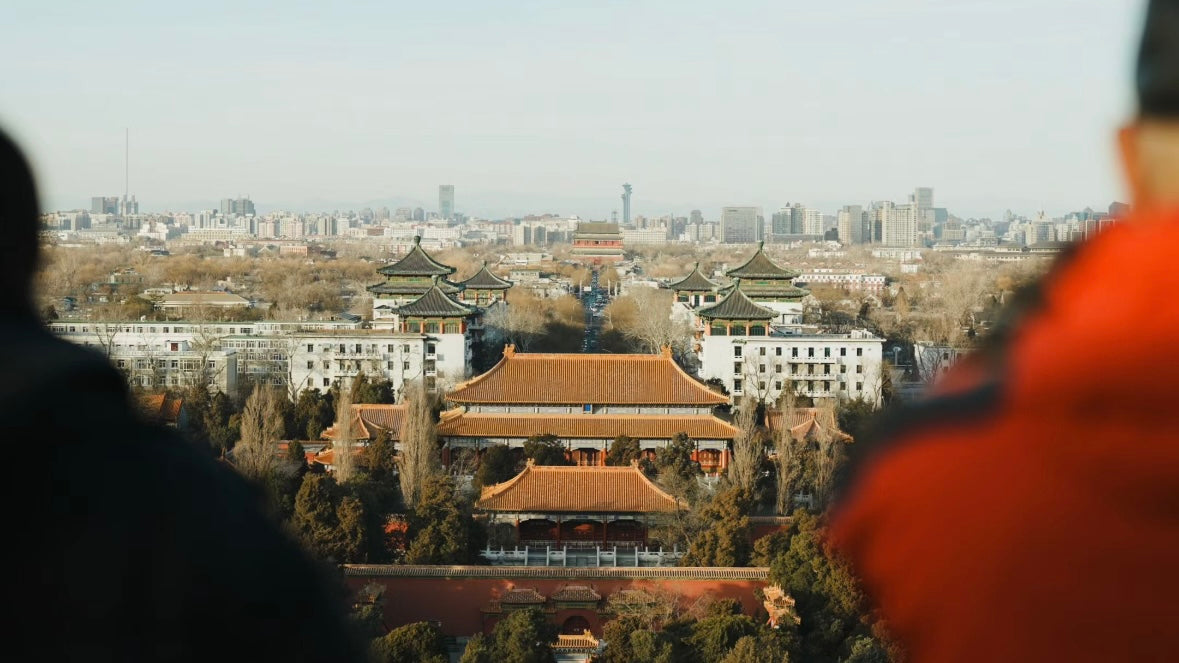Gude Temple, also known as Good Temple, was built in 1877 and remains one of Wuhan’s most unique Buddhist sites. With its fusion of Chinese, Gothic, Greek, and Southeast Asian architecture, it stands as a hidden cultural treasure in the city’s Jiang’an District. Unlike famous sites like Yellow Crane Tower, Gude Temple offers a tranquil escape where history, spirituality, and architecture converge.
As Wuhan’s skyline stretches ever upward, modern glass towers reflect the golden waters of the Yangtze River, and the city’s streets hum with the clatter of bicycles, the aroma of hot dry noodle, and the echoes of a city constantly in motion. But hidden in the quieter corners of Jiang’an District, far from the crowds of Yellow Crane Tower, stands Gude Temple—a place where time slows, silence reigns, and history lingers in every carved pillar and vaulted arch.
Step inside, and discover the forgotten sanctuary where East meets West.

1. Gude Temple: A Hidden Buddhist Gem in Wuhan
The History of Good Temple: A Blend of Cultures
Tucked away in Jiang’an District, north of Hankou, Gude Temple is a world away from Wuhan’s modern skyline. It is not a famous tourist spot, nor does it draw the same crowds as Beijing’s Lama Temple or Hangzhou’s Lingyin Temple—but that is precisely its charm.
Unlike the grand Buddhist temples of China, Gude Temple is a sanctuary of silence, a place where the past breathes through crumbling stone carvings, and flickering incense carries the weight of forgotten prayers.
2. The Unique Architecture of Gude Temple
More than just a place of worship, Gude Temple’s architecture reflects the global influences that shaped Wuhan’s history. Built in 1877 during the late Qing Dynasty and later expanded in the 20th century, Gude Temple is unlike any other Buddhist temple in China. While its religious purpose remains unmistakable, its design is a striking fusion of global influences, reflecting Wuhan’s history as a crossroads of cultures and ideas.
What makes Gude Temple truly extraordinary is its unexpected fusion of architectural styles. Built in 1877 and later expanded in the early 20th century, its design is a mysterious blend of:
🔹 The Towering Stupas: Burmese & Indian Buddhist Influence
Gude Temple’s rooftop pagodas and pointed spires resemble the stupas of Myanmar and Thailand, particularly the Shwedagon Pagoda in Yangon.

🔹 The Classical Columns: Ancient Greek Influence
At first glance, one might mistake Gude Temple for an ancient Greek structure rather than a Buddhist sanctuary. This is due to its grand outer colonnades, reminiscent of the Parthenon in Athens.

🔹 The Vaulted Arches & Spires: Gothic & Romanesque Influence
Gude Temple’s facade and window designs bear striking similarities to Gothic cathedrals of Europe. The arched doorways, pointed spires, and rose windows recall elements seen in Notre-Dame de Paris and Cologne Cathedral.

🔹 The Dome & Pavilion Towers: Islamic Influence
One of the most surprising elements of Gude Temple’s design is its Islamic-inspired domes. Many first-time visitors mistake it for a mosque, particularly due to the open-air pavilion towers, geometric latticework, tiered, pagoda-like minarets, reflecting Wuhan’s history as a multicultural trade hub.

3. Legends and Hidden Stories of Gude Temple
The Mystery of Its Origins: Why Built Gude Temple?

Beyond its breathtaking design, Gude Temple’s history is full of mystery and legend. Some say that European architects, Indian monks, and Chinese scholars collaborated on its construction, making it an unparalleled fusion of East and West.
A famous monk gave it name, he was learning English at that time, so he name it as "Good temple". its pronunciation in Chinese is as The mercy of Ancient.
4. Practical Tips for Visiting Gude Temple (FAQ)
To make the most of your visit to Gude Temple, here are some essential travel tips.
Best Time to Visit and How to Avoid Crowds
Morning (8:00 - 10:00 AM) is the best time to visit Gude Temple, when the soft sunlight highlights its intricate carvings, and the atmosphere is peaceful. Avoid weekends, when local worshippers visit in greater numbers.
Getting There: Nearest Subway and Transport Tips
The easiest way to reach Gude Temple is by taking Metro Line 1 to Jianghan Road Station (江汉路站), followed by a short taxi ride. Alternatively, take Bus 402 or 509 and get off at Gude Temple Stop (古德寺站).
What to Eat Near Gude Temple
After exploring Gude Temple, don’t miss the chance to try Wuhan’s famous street food nearby:
- Reganmian (热干面) – Wuhan’s most famous breakfast noodle dish.
-
Doupi (豆皮) – A crispy pancake filled with rice, mushrooms, and pork."

Important Cultural Considerations: A Topic to Avoid
Wuhan was the first city where COVID-19 was discovered, and while you may be curious, please avoid mentioning or asking about it for safety consideration. For many locals, the pandemic was a deeply traumatic experience. It’s best to remain silent on the topic unless a local brings it up themselves.
5. Why Explore Gude Temple with Bridge with Locals?
Most visitors to Wuhan head straight for Yellow Crane Tower or the bustling Jianghan Road, but those who seek the city’s quieter, more mysterious side will find something special in Gude Temple.
Walk with locals who can share hidden legends and forgotten histories.
Experience the temple’s peaceful aura—not just as a visitor, but as a participant in its sacred space.
Discover Wuhan beyond the tourist trail—in a place where Buddhism, history, and whispers of the past still linger.
For those looking to go beyond Wuhan’s main attractions, Gude Temple offers a moment of quiet beauty, cultural fusion, and historical mystery. Whether you’re fascinated by architecture, Buddhism, or hidden gems in China, this temple is a must-visit.
Want to explore Gude Temple with a local? Let Bridge to Locals take you beyond the ordinary, sharing hidden tales, secret spots, and authentic experiences. Book your immersive tour today!







Leave a comment
This site is protected by hCaptcha and the hCaptcha Privacy Policy and Terms of Service apply.